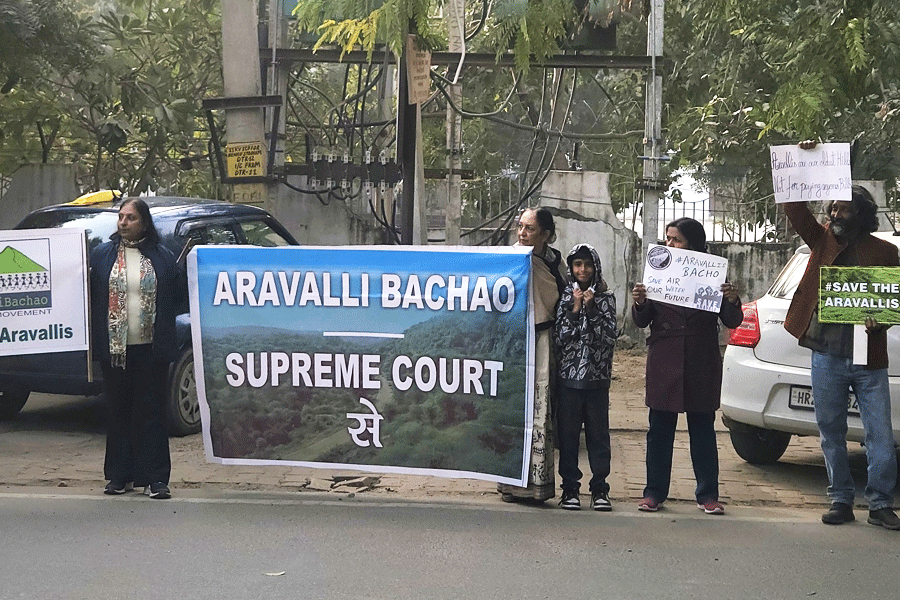 |
| Sourav and DareDevils captain Virender Sehwag at the Ferozeshah Kotla. (Prem Singh) |
New Delhi, May 22: Blame the trees for the unusual spell of wet weather that prevented the Knight Riders and the Delhi DareDevils from wielding the willow tonight, killing any hopes Sourav Ganguly’s boys might have had of making it to the semi-final.
The growth of forest and tree cover in the capital and its neighbouring regions — traditionally an arid zone — may be a key factor contributing to unseasonal local rain, atmospheric scientists said.
Rain in Delhi during the month of May has increased each year over the past three years — from 37mm in 2005 to 71mm in 2007, and 104mm recorded so far this month. Over the decades, forest and tree cover in the capital has bloomed — from a mere 22sqkm in 1993 to 283sqkm by 2005.
“We could call this unintentional climate engineering — on a local scale,” said Rengaswamy Ramesh, a senior scientist at the Physical Research Laboratory, Ahmedabad.
Trees pump moisture into the air, and moisture helps build clouds. Convective air currents can draw moisture from surrounding areas and, in the right conditions, produce rain, Ramesh said.
Studies aimed at reconstructing the history of the Indian monsoon have suggested that Rajasthan and its neighbourhood experienced a reduction in rainfall between 6,000 years and 4,000 years ago, turning the region a lot more arid than it was earlier.
 |
“But human activity may be changing this aridity at some places,” Ramesh, who specialises in ancient climate, told The Telegraph. The Indira Gandhi Canal in Rajasthan has also added water vapour into the atmosphere, and observations indicate that rainfall in parts of Rajasthan has increased in recent years, he said.
Meteorologists concede that more trees will add greater moisture into the atmosphere, but argue that other conditions are also necessary for this to translate into rain.
“The trees will mean more moisture is available, but a low pressure system that moves into northwest India is usually the trigger for rain here,” a weather scientist in Delhi said, but did not give his name.
Trees add moisture into the atmosphere through a process called transpiration — the loss of water through leaves. A full-grown tree could spew a few cubic metres of water into the atmosphere each day.
Irrigation and plantations can also influence rainfall. “But the effect may not be identical at all places,” said Debasish Lohar, a physicist studying atmospheric sciences at Jadavpur University, Calcutta.
In the mid-1990s, Lohar had shown that irrigation in southwestern Bengal had reduced the intensity of the sea breeze activity, resulting in decreased thunderstorm and rainfall.
“This is the effect close to the coast,” Lohar said. “The temperature gradient between the land and sea decreases, reducing the flow of moisture from the sea.”
“But in arid regions such as Delhi and Rajasthan,” Lohar said, “the planting of trees is likely to mean more rain.”










